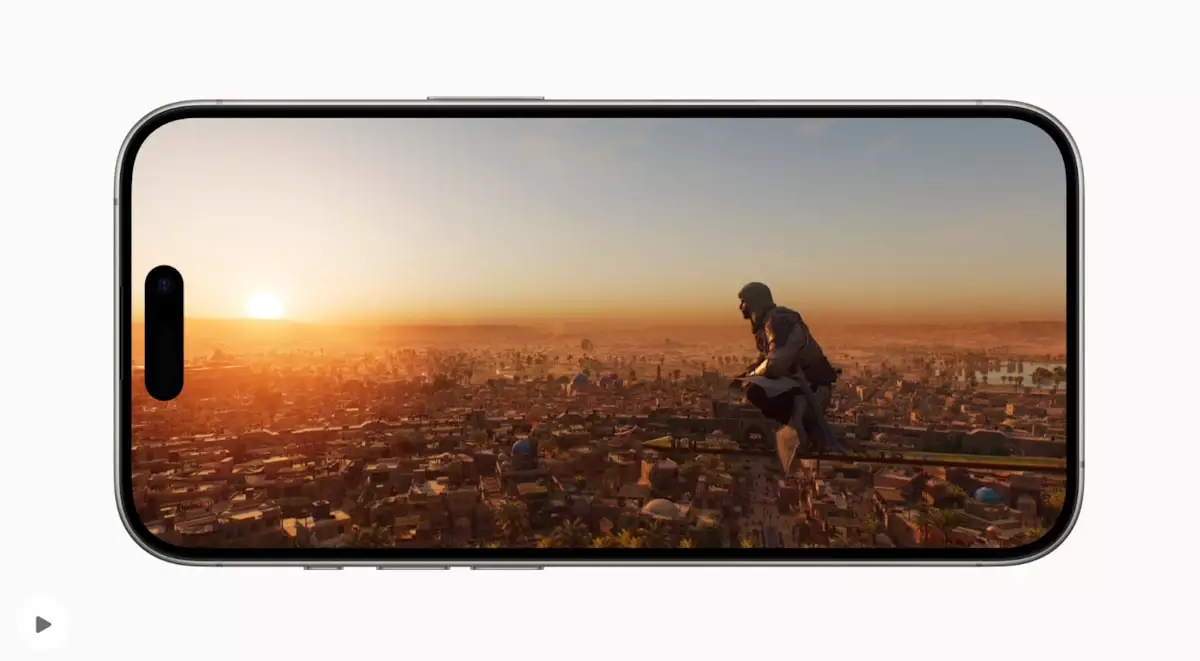The unveiling of the iPhone 15 Pro last year marked Apple’s ambitious foray into mobile gaming. With hardware touted as capable of handling triple-A console titles, expectations soared. Gamers anticipated that iconic franchises like Resident Evil, Death Stranding, and Assassin’s Creed would finally transition into the pocket-sized arena, promising thrilling gameplay experiences on the go. However, a closer examination reveals an unsettling truth: despite the high-profile releases, these games have largely floundered in the market, signaling deeper issues within mobile gaming consumption patterns.
At first glance, the launch of AAA titles on the iPhone seems like a triumph. The potential for running graphically intensive games on a mobile platform presents a tantalizing opportunity for gaming enthusiasts. Assassin’s Creed Mirage, for example, debuted to great fanfare on June 6, marketing itself as a groundbreaking mobile experience. While the initial download figures appeared promising—over 123,000 downloads—reality set in quickly as ongoing sales figures told a different story.
According to analysis by mobilegamer.biz, the conversion rate from downloads to paid sales is alarmingly low. Despite being downloaded an impressive number of times, fewer than 3,000 users have actually opted to pay the full price of $49.99 to unlock the game completely. This stark disparity raises profound questions regarding how gamers engage with mobile titles, suggesting that the allure of established franchises fails to translate into actual purchases.
Price plays a critical role in mobile game sales. In India, where many games are offered at steep discounts (up to 50% off the original price), one might expect that a lower entry barrier would result in increased consumer uptake. However, the persistence of low sales figures indicates that even substantial discounts aren’t compelling enough to convince most players. The starting price for games like Assassin’s Creed Mirage can reach as high as Rs. 3,999, a significant sum for casual mobile gamers who typically gravitate towards free-to-play (F2P) models. The reality is that the vast majority of gamers on mobile platforms are conditioned to enjoy a wealth of F2P options, making the shift to premium AAA titles a difficult one to navigate.
Further compounding the disappointment is the overwhelming success of free-to-play games compared to their premium AAA counterparts. The sheer volume of downloads associated with F2P titles—often reaching millions—stands in stark contrast to the measly figures reported for AAA games. For instance, while Assassin’s Creed Mirage reportedly grossed around $138,000, F2P titles continuously amass revenue that dwarfs these numbers, demonstrating a clear preference among mobile users.
This raises the question: is the traditional model of premium gaming experiencing its twilight on mobile devices? The patterns indicate that mobile users prioritize accessibility and immediate gratification, favoring models that allow unlimited play without upfront fees.
Notably, this lackluster performance isn’t confined to one title. Other major releases such as Resident Evil 4 Remake and Death Stranding have similarly suffered. With Resident Evil 4 reportedly garnering around $208,000 in revenue, indicating that only about 7,000 users paid for full access since its release, it’s evident that even the best-known franchises struggle in this new mobile landscape.
These figures are particularly disheartening for developers and publishers who have poured resources into adapting beloved titles for mobile users. Despite the perceived technological advancements of devices like the iPhone 15 Pro, this trend underscores a significant disconnect between what publishers envision and what mobile gamers are willing to embrace.
The initial excitement surrounding AAA games on mobile devices has given way to an urgent need for introspection among game developers and publishers. With repeated disappointments in sales figures, there is a potential call to revisit and innovate the mobile gaming model. Exploring hybrid approaches that blend aspects of F2P gaming with microtransactions could be vital for enticing the modern gamer while still delivering rich experiences.
While the iPhone 15 Pro opened the door for console-quality gaming on mobile, the lukewarm reception of AAA titles reveals that translating high-stakes gaming into the mobile realm requires more than just impressive specs. It demands a keen understanding of consumer behavior—one which continues to evolve in an increasingly complex digital landscape. Only through adaptive strategies can developers hope to tap into the vast potential of mobile gaming.


Leave a Reply